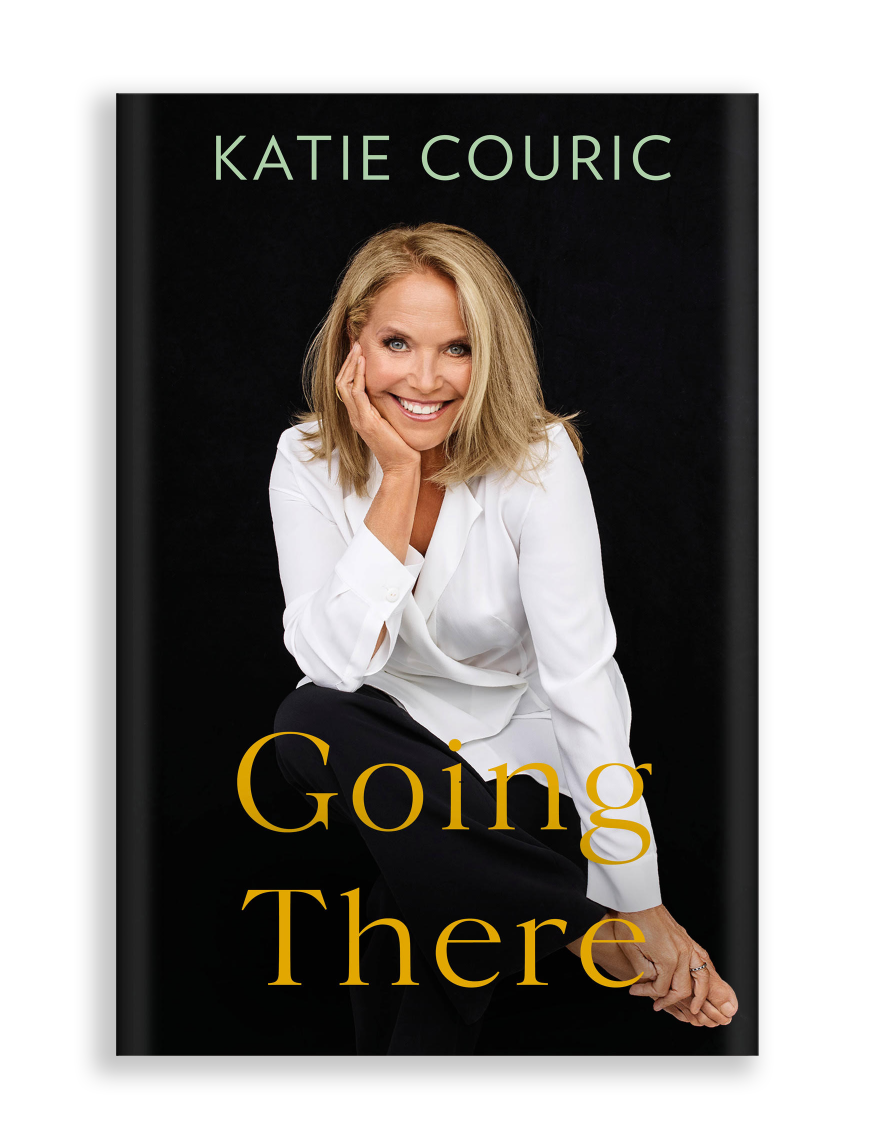What happens when a celebrated journalist bares her soul, confronting both personal demons and professional battles in a tell-all memoir? Katie Couric's Going There offers an unprecedented look into the life of a media icon, promising a journey that is as revealing as it is riveting.
The anticipation surrounding the release of Going There by Katie Couric was palpable. The media landscape, usually a bastion of carefully curated public images, was poised to receive an unfiltered account of a life lived largely under the public gaze. Couric, a name synonymous with American television news for decades, had cultivated a reputation for professionalism and affability. But Going There promised something different: an intimate exploration of the woman behind the headlines, the struggles beneath the polished veneer, and the triumphs that punctuated her extraordinary career. Initial reports, however, were not uniformly positive. Pre-release excerpts, leaked by the New York Post, painted a picture of a figure potentially at odds with the image she had carefully cultivated. This created a buzz around the book, making people more eager to know what's inside.
The book’s arrival on bookshelves was met with considerable fanfare. The reviews, a mixture of praise and criticism, were soon circulating in the news. Going There delves into the complex relationships that shaped Couric's life. At the heart of the memoir lies a narrative of personal resilience, marked by both professional successes and devastating personal losses. Couric's reflections on her career trajectory are candid and unvarnished. She details her experiences at the Today Show, her time as a network anchor, and her venture into independent journalism. The book provides behind-the-scenes glimpses into the world of broadcast news, exploring the pressures, the politics, and the personalities that shaped her career. But Going There is not simply a chronicle of professional achievements; it's also a deeply personal story.
The book explores her relationships with colleagues, the power dynamics within the industry, and the price of success. Couric confronts the challenges of being a woman in a male-dominated field. She provides a frank assessment of the sexism she encountered and the ways she navigated these obstacles. Going There is particularly insightful in its exploration of the evolving media landscape. The rise of social media, the proliferation of 24-hour news cycles, and the increasing demands on journalists are all examined through Couric's experiences. The book touches on the ethical dilemmas and professional compromises she faced during her career.
Couric's memoir also delves into her personal life, including her marriages, the loss of her first husband to cancer, and her journey as a single mother. Couric does not shy away from the tough questions, from the intimate details of her life to her regrets. Going There also examines her advocacy work, particularly her involvement in Stand Up To Cancer. It is a cause she co-founded, aiming to accelerate cancer research and raise awareness. Her commitment to this cause stems from her own personal experience and the desire to make a difference.
One of the defining elements of Going There is its unflinching honesty. Couric does not sanitize her experiences or attempt to create a flawless public image. The narrative is marked by both humor and pathos, reflecting the complexities of human life. It offers lessons about perseverance, resilience, and the importance of staying true to oneself. The book, for all its personal details, is a reflection of American society over the past few decades, through the eyes of someone who has been in a position to observe and influence events.
The book also touches on her interactions with high-profile figures in politics and media. The nature of these relationships, the power dynamics at play, and the behind-the-scenes maneuvering are all given a candid treatment. Couric's account of her encounters provides unique insights into the world of power and influence. Going There serves as a reminder that even those who appear invulnerable are navigating the complexities of life, grappling with their own vulnerabilities and striving to make sense of the world. The book also contains some of her career high and lows, and some of the biggest interviews of her career are looked at again.
The narrative goes beyond mere anecdotes; it provides a window into the mind of a woman who has faced public scrutiny and personal tragedy. It is a testament to her strength and determination. Going There gives a portrait of Couric, not just as a media figure, but as a human being. It is a book that encourages introspection and prompts the readers to reflect on their own lives.
The reaction to Going There has been varied, as expected. Some critics have lauded Couric for her candor and her willingness to be vulnerable, while others have questioned the book's revelations. The release sparked intense debate about the ethics of memoir writing. Whatever the reaction, it's clear that Going There has made its mark on the media landscape.
The book has become a cultural touchstone, sparking discussions about gender dynamics in the workplace, the role of the media, and the importance of mental health. Whether one agrees with all of Couric's perspectives or not, Going There has undoubtedly started an important conversation. It encourages us to look beyond the surface and explore the complexities of human experience.
Ultimately, Going There is a reflection on life, loss, and the enduring human spirit. It's a book that encourages readers to be authentic, embrace vulnerability, and recognize the lessons to be learned from both triumphs and failures. For those looking for an unvarnished perspective on a life lived in the spotlight, Going There is a must-read. The book has become a cultural phenomenon, and the story of Katie Couric continues to captivate audiences worldwide.
The early publicity for Going There presented the book in a way that highlighted its potentially controversial aspects. This marketing strategy was effective in generating initial interest, but the book's true substance is much more multifaceted.
The memoir does more than just retell her own story; it also provides a window into the lives of those around her. Couric shares anecdotes about her family and friends, painting a vivid portrait of her support network. These stories bring a human dimension to the narrative.
The book is not merely a chronicle of professional achievement; it also deals with Couric's personal life. She addresses her two marriages, the tragedy of losing her first husband to cancer, and the challenges of single motherhood. This element of honesty creates a sense of intimacy with the reader.
One of the most striking aspects of Going There is Couric's candor regarding her own flaws and mistakes. She doesn't attempt to portray herself as perfect but shares her insecurities. This authenticity makes the book resonate with the reader.
The book is a testament to her perseverance, reflecting her ability to navigate challenges and maintain her resolve. It reminds the readers of life's trials and triumphs.
The impact of the book goes far beyond entertainment. It's a thought-provoking reflection on life, loss, and the human condition. The book has a deeper influence on the culture. It offers inspiration and a call for introspection.
The response to Going There has been a mixed bag of reactions. Some critics celebrate Couric's openness, while others are critical. Whatever the response, the book has unquestionably made its mark on the media and cultural landscape.
The impact of the book goes beyond entertainment, with discussions about workplace dynamics and the role of media. It serves as a catalyst for introspection and encourages a broader understanding of human existence.
“Going There” has the potential to shape how people view their own experiences. Her story encourages people to be true to themselves and learn from the challenges they face.
Katie Couric's memoir is a powerful and essential read. It offers a candid view into the life of a media icon, as well as a window into the changing landscape of media and American society.
| Bio Data | Details |
|---|---|
| Full Name | Katherine Katie Couric |
| Born | January 7, 1957 (age 67) in Arlington, Virginia, U.S. |
| Education | University of Virginia (B.A.) |
| Spouse(s) | Jay Monahan (m. 1989–1998, his death) John Molner (m. 2014–present) |
| Children | Ellie Monahan, Caroline Monahan |
| Website | katiecouric.com |



